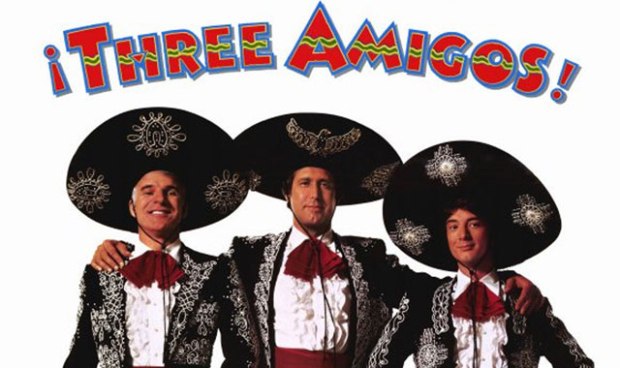Recently, my manager said to me, “Andy, your BDD documentation looks great, but could you please mention The Three Amigos?” A brief flash of panic came over me – I had never heard of “The Three Amigos” before. My immediate thought was the 1986 film of the same name or the Disney film The Three Caballeros. After a little research, I knew exactly who they were; I just didn’t know they had a name.
Who are “The Three Amigos”?
“The Three Amigos” refers to a meeting of the minds of the three primary roles involved in producing software:
- Business – Often named the “business analyst” (BA) or “product owner” (PO), the business role provides what problem must be solved. They provide requirements for the solution. Typically, the business role is non-technical.
- Development – The developer role provides how the solution to the problem will be implemented. They build the software and must be very technical.
- Testing – The testing role, sometimes named “quality assurance” (QA), verifies that the delivered software product works correctly. They also try to find defects. The tester role must be somewhat technical.
During software development, The Three Amigos should meet regularly to discuss how the product will be developed. It is a shift left practice to avoid misunderstandings (like a game of telephone), thus improving quality and avoiding missed deadlines. The discussions should include only the individuals who will actually work on the specific deliverable, not the whole team.
While The Three Amigos seems most popular in Agile, it can be applied to any software development process. Some (here and here) advocate regularly scheduled formal meetings. Others (here and here) interpret it as an attitude instead of a process, in which the roles continuously collaborate. Regardless of implementation, The Three Amigos need to touch base before development begins.
Applying BDD
The Three Amigos fits perfectly into behavior-driven development, especially as part of BDD with Agile. Behavior scenarios are meant to foster collaboration between technical and non-technical roles because they are simple, high-level, and written in plain language. Given-When-Then provides a common format for discussion.
Ideally, when The Three Amigos meet during grooming and planning, they would formalize acceptance criteria as Gherkin features. Those feature files are then used directly by the developer for direction and the tester for automation. They act like a receipt of purchase for the business role – the feature file says, “This is what you ordered.”
A great technique for Three Amigos collaboration is Example Mapping – it efficiently identifies rules for acceptance criteria, behavior examples, and open questions. Examples can easily be turned into Gherkin scenarios either during or after the meeting.
Since BDD relies on feature files as artifacts, The Behavior-Driven Three Amigos must be more than just an attitude. The point of the collaboration is to produce feature files early for process efficiency. Less formal meetings could quickly devolve into all-talk-no-action.
Don’t Presume Anything
Don’t presume that the three roles will naturally collaborate on their own. I’ve seen teams in which the testers don’t participate in planning. I’ve also seen organizations in which automation engineers don’t help to write the test cases that they need to automate! Developers often abdicate responsibility for testing considerations, because “that’s QA’s job.” And, specifically for BDD, I’ve noticed that product owners resist writing acceptance criteria in Gherkin because they think it is too technical and beyond their role.
The Three Amigos exists as a named practice because collaboration between roles does not always happen. It is an accountability measure. Remember, the ultimate purpose for The Three Amigos is higher quality in both the product and the process. Nobody wants more meetings on their calendar, but everyone can agree that quality is necessary.

21 comments